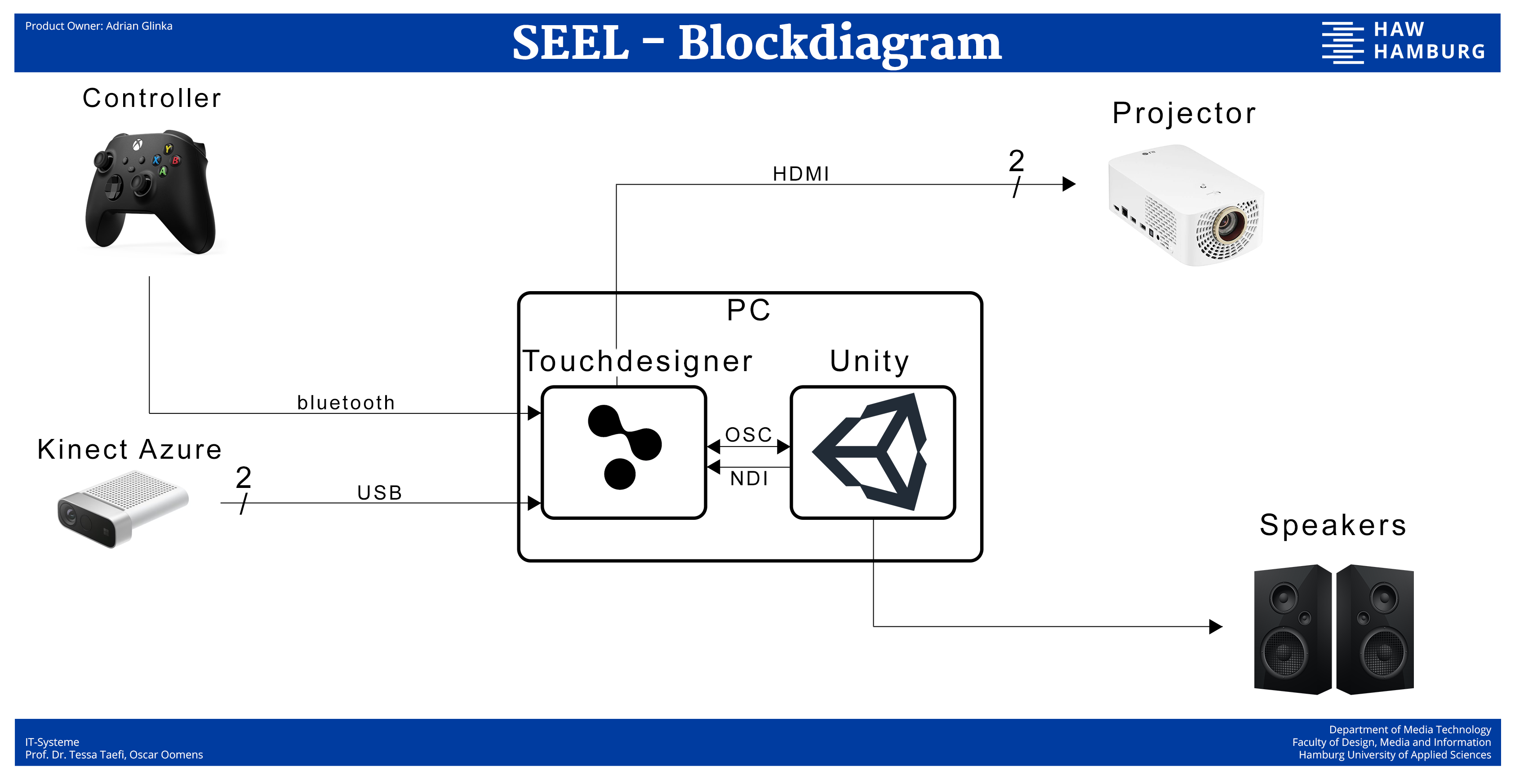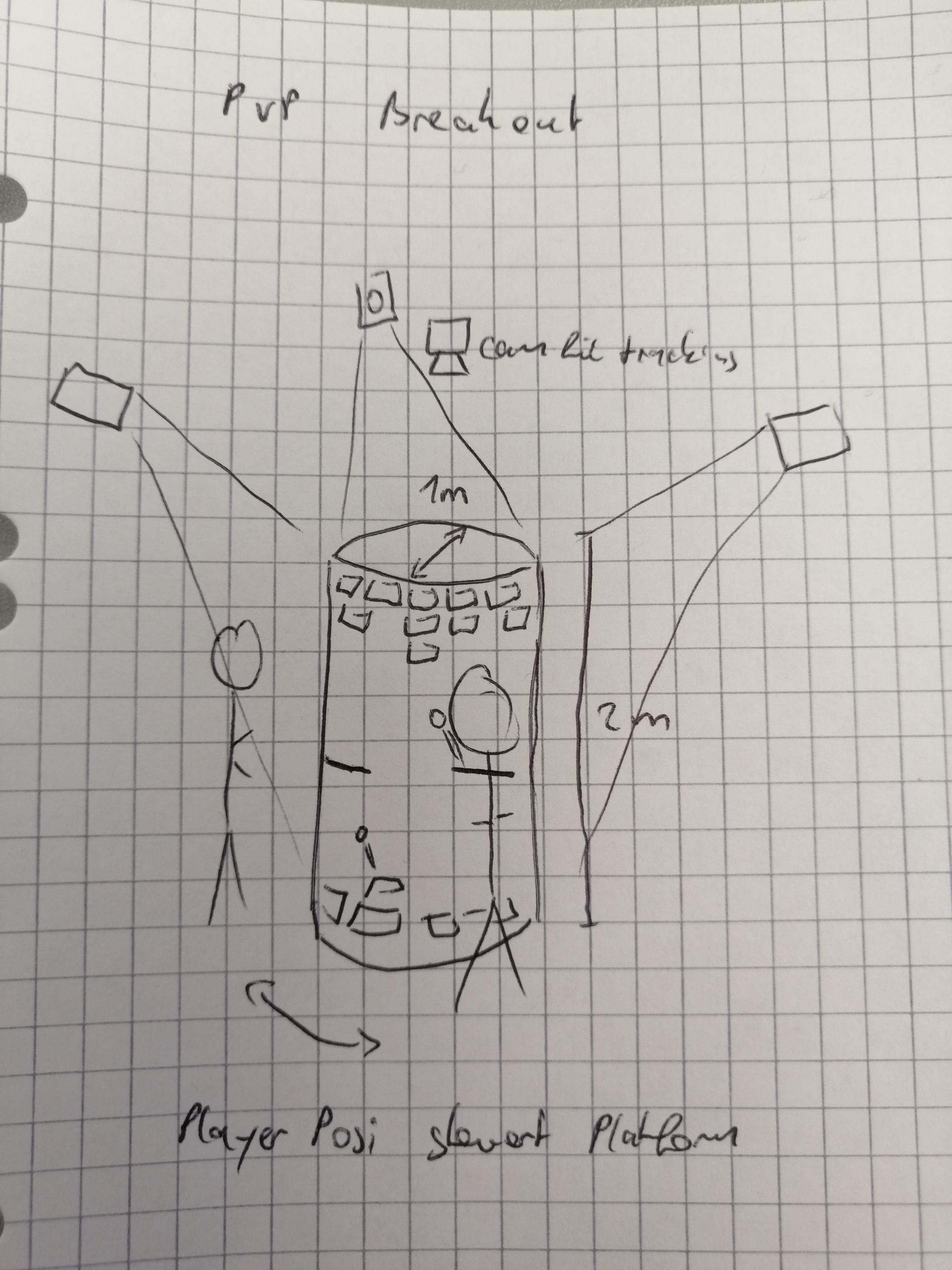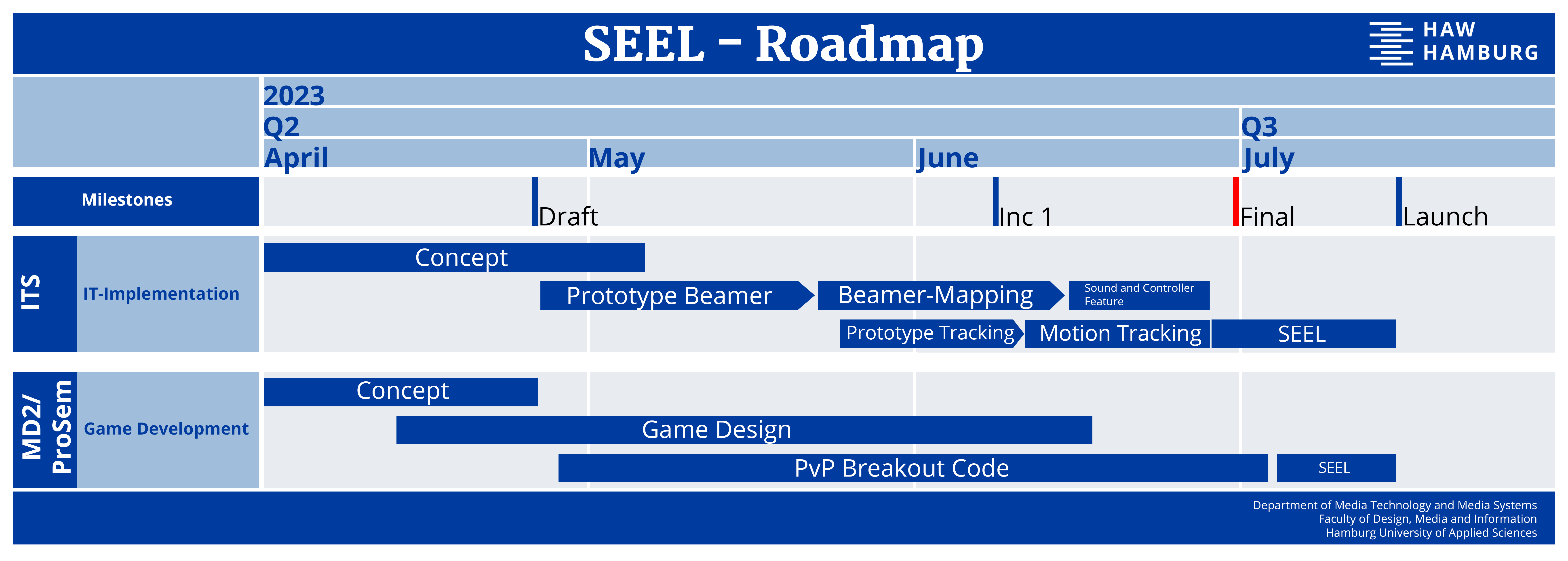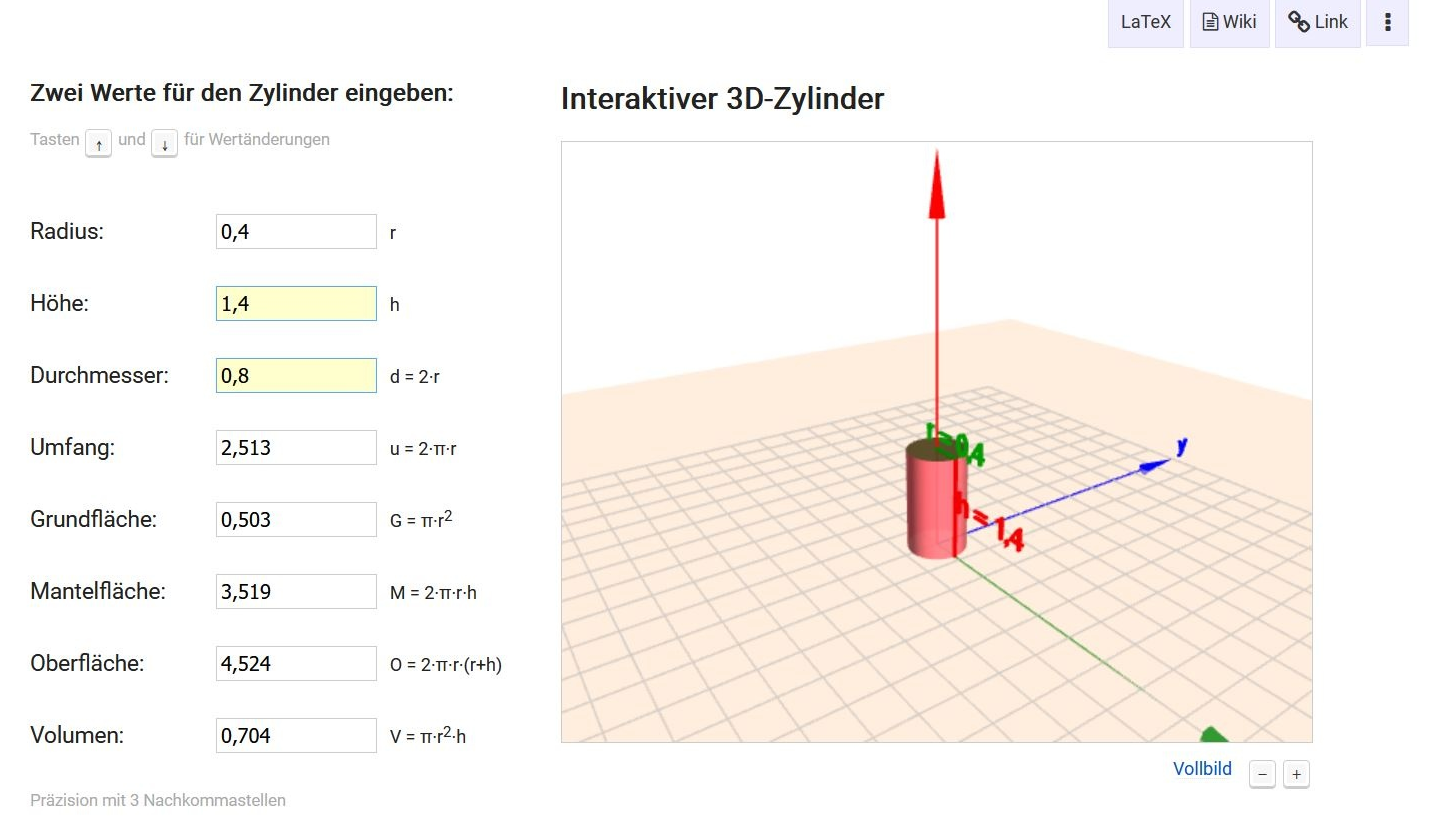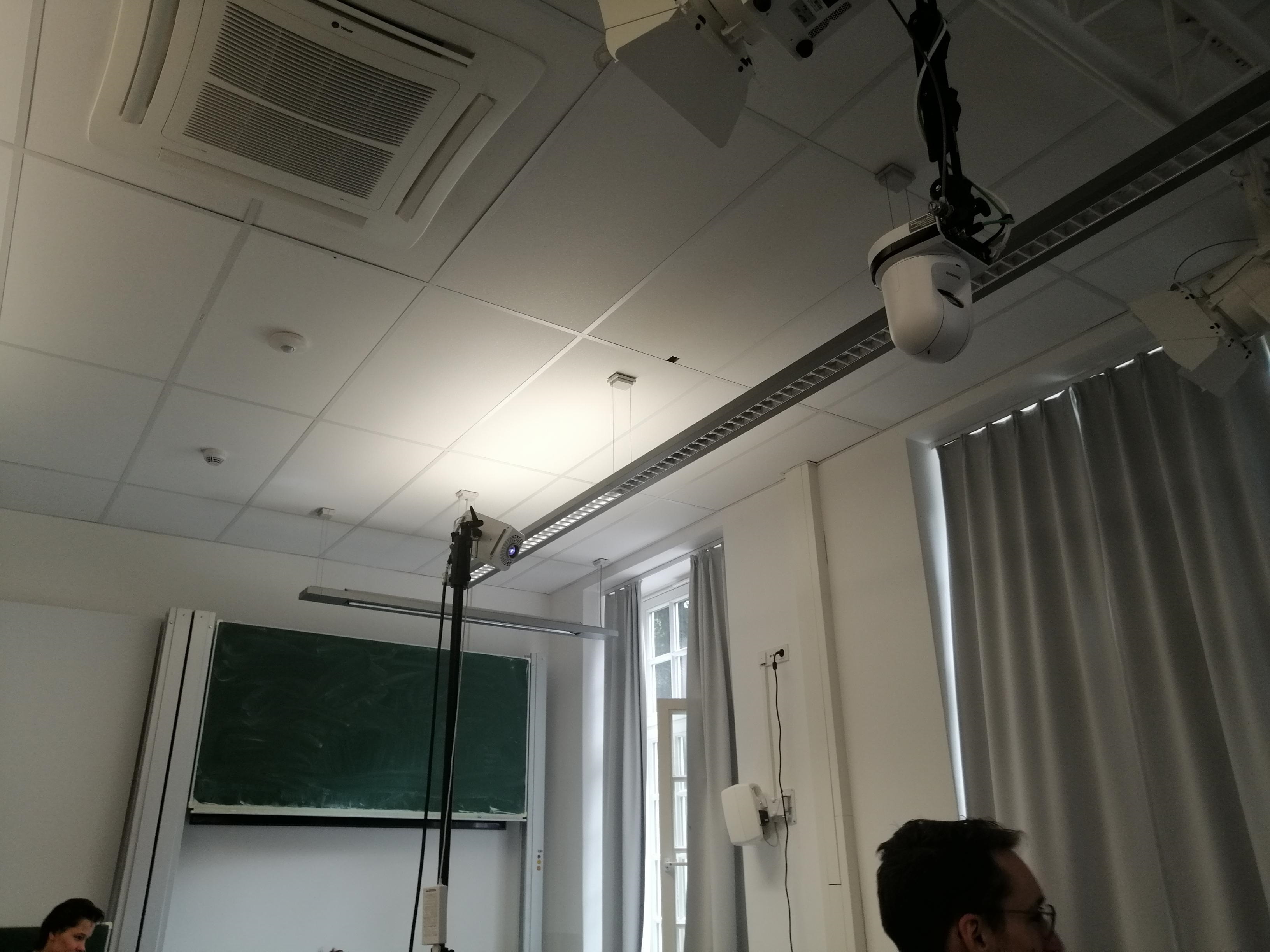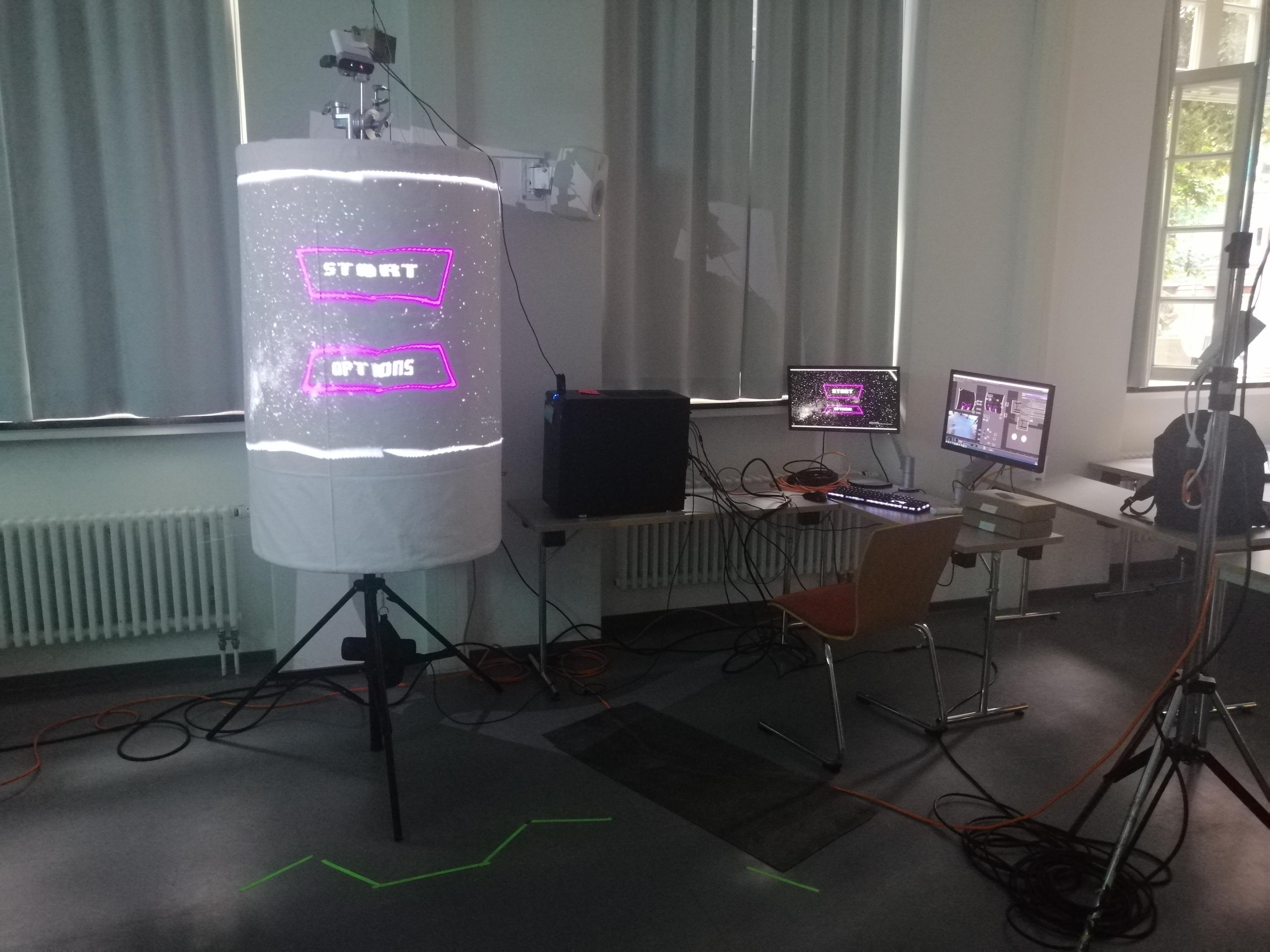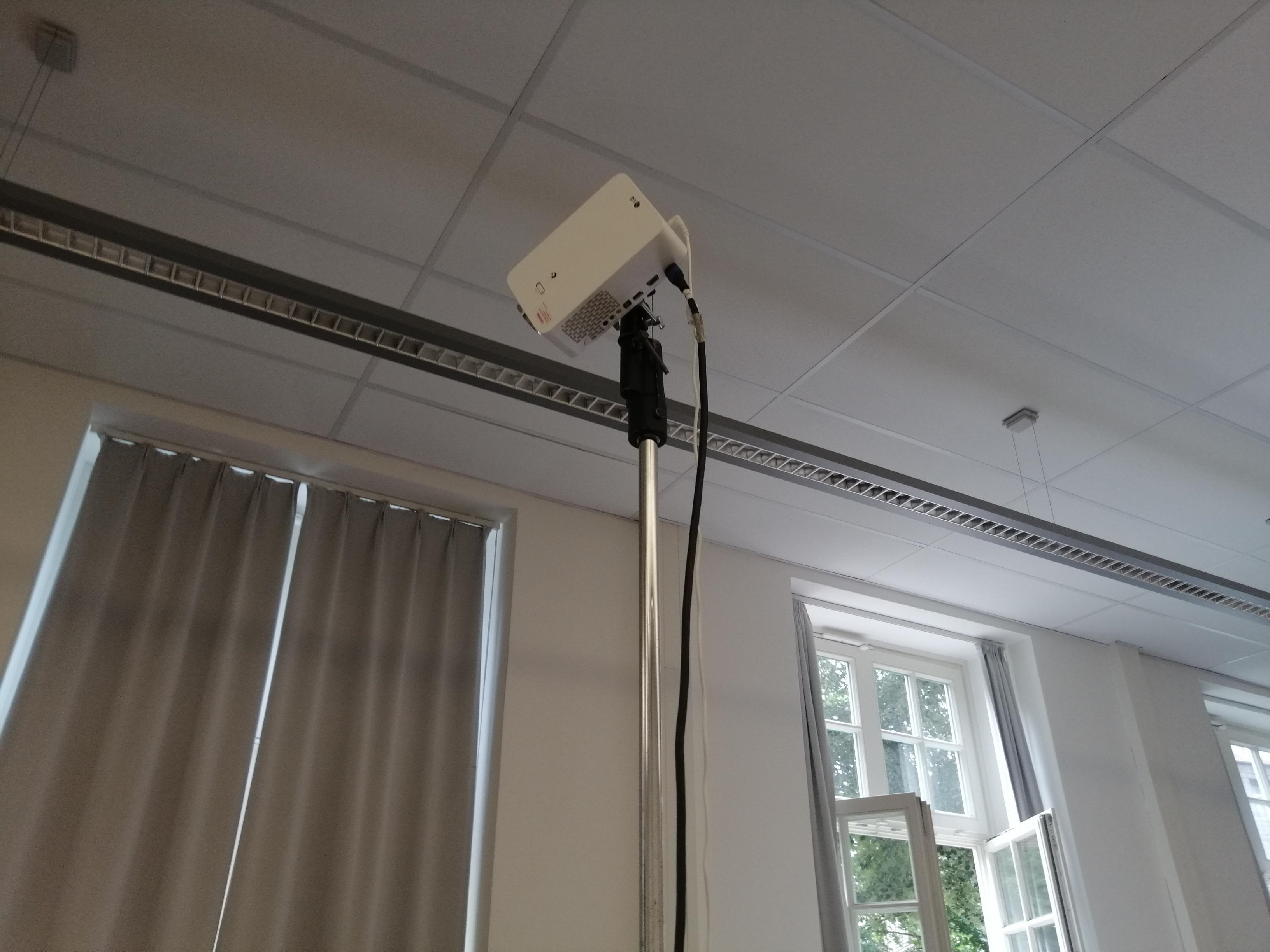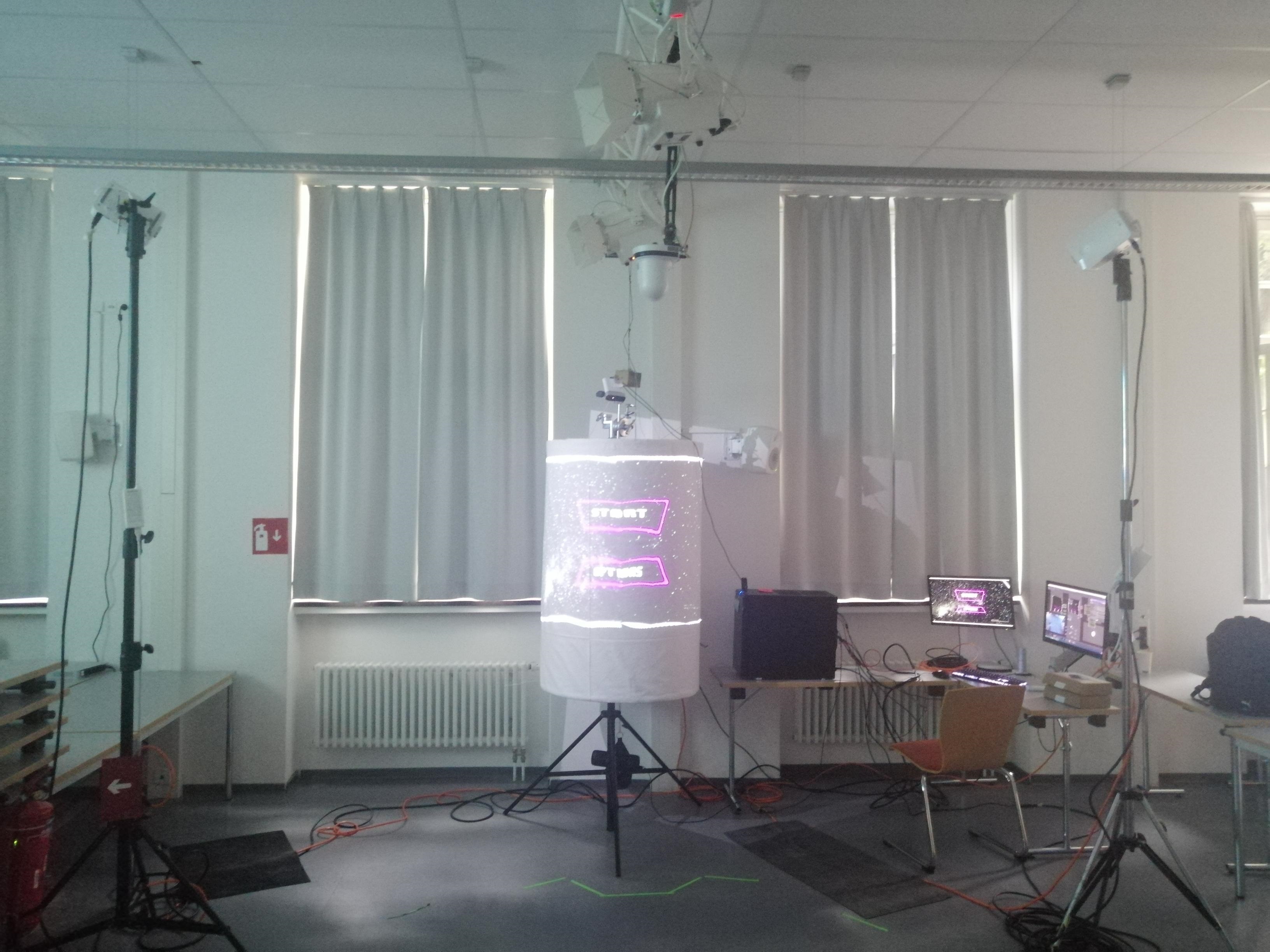¶
¶ Vision Statement:
„Motivate people to physically exercise through fun motion tracking games. “
¶ Product Vision:
Our product is for gaming interested and competitive people who want to experience a physically interactive game. Our pillar is a motion tracking PvP breakout game that creates fun gameplay by moving without controllers or heavy headsets and playing against each other. Unlike VR or the WII, Seel offers a free motion-controlled gaming experience. Our product exclusively offers the possibility to play the famous “Breakout”-Game in a competitive PvP and motion interactive way.
¶ Motivation
The idea of project Seel is to build an interactive system, focusing on a real-world object, where the goal is that multiple people are able to interact with the object by simply moving around it.
Therefore, we decided to use a pillar as object, supported by a tracking and projection system, so no additional controller would be needed to interact.
For the interaction itself we've planned to develop a competitive version of the game "Breakout".
The whole Project is supposed to show the possibilities of having an unconventional platform to show games on. In this case a LED Wall/ LED Pillar, which is ordered by the Games Lab but has, as of the time of our project, not arrived yet. Therefore, we choose to make a prototype with a paper pillar and projectors.
¶ The Team
- Stefan Kulow
- Adrian Glinka
- Jon Louis Schulte
- Ole Christiansen
- Yeji Yun
- Rike Malottke
¶ Inspiration
While thinking about a game mechanic that works well with only two input values and 360 degree playing area, we got the Idea to modify the classic Breakout game into a competitive two Player game. What convinced us to take this idea further was the fact, that it doesn’t matter which platform is assigned to which player, making the development a lot easier. Stylewise we got inspired by the neon glow look. We didn’t strictly follow a single astetic but mixed several strong and colorful graphics.
(Breakout by Atari | Source: https://t.ly/OQ46)
¶ Gameplay
- Based on the videogame "Breakout" (1976) from Atari
- Competitive Multiplayer (planned for 2 players)
- Goal is to be the first one collecting 350 points
¶ Rules:
- Each player controls a paddle
- There are two balls which can hit in a certain direction by using the paddles
- Each ball can break a brick by touching it
- Player one tries to break the bricks on the upper screen
- Player two tries to break the bricks on the lower screen
- Each brick gives a certain amount of points
- The number of points given increases with each row starting from the middle of the screen
- The paddles are not bound to a player and can therefore be switched
- The game ends after a player reaches 350 points
¶ Analysis
Resources:
Manually created:
- Code
- Pillar
Bought / Rent:
- Tracker
- Beamer
- PC
- Sound devices
- Tools
- Assets
Controls:
- Mouse & Keyboard (for controlling the menu)
- Body movement via tracking (for playing)
Output:
- Beamer projection onto the pillar
- Speakers for the sound
Community:
- Starting with this wiki page to introduce the project to people
- Maybe social media after successfully finishing the prototype
Research topics:
- OpenCV in Unity
- OSC
Ultra-Wideband- OptiTrack
- Pricings for hard- & software
- Similar projects for getting impressions
Issues / Challenges:
- Lighting of the room
- Material accqusition
Software requirements:
Godot/ Unity for developing the game- Touchdesigner as interface between tracker, game and beamer
- Operating System Windows 10
Libraries, Frameworks, Packages:
- extOSC
Hardware requirements:
- 3 x Beamer
- 3 x IR- Camera
Ultra-Wideband- PC (3 x Video Out)
- Speakers
- Controller
Further requirements:
- Pillar
- Construction for mounting the beamer / tracker
- Room / Space for the setup
- Energy supply
- Cables
Alternative Solutions:
- Pressure pads
- Camera Tracking
(Block diagram)
¶ Project Reflection
As part of the collaboration with it-systems, our team was split into game devs and hardware implementation which resulted in an effective way of parallel working. While there was a constant communication between the teams, everyone could independently work on their tasks. As with every project in the end you always wish for more time to make things better.
¶ Lessons Learned
- Motion tracking can get tricky and complicated very quickly
- Unity sometimes acts strange with commas, dots and floating point numbers
- Always have a few backup plans in case some team members aren’t able to contribute as planned
- It is easier to intereact with the kinect through touch designer than throuh unity directly
- Mapping a video onto a curved surface is easier with resolume than touch designer
- A kinect needs a lot of hardware power to work efficiently.
¶ Future Perspective
- Adding items to get an own advantage or a disadvantage for the opponent
- Adding new game modes, e.g. a coop mode
- Combing multiple motion tracking technologies to improve tracking accuracy and reliability.
- Bringing the game to the real LED Pillar instead of using a paper one with beamers

